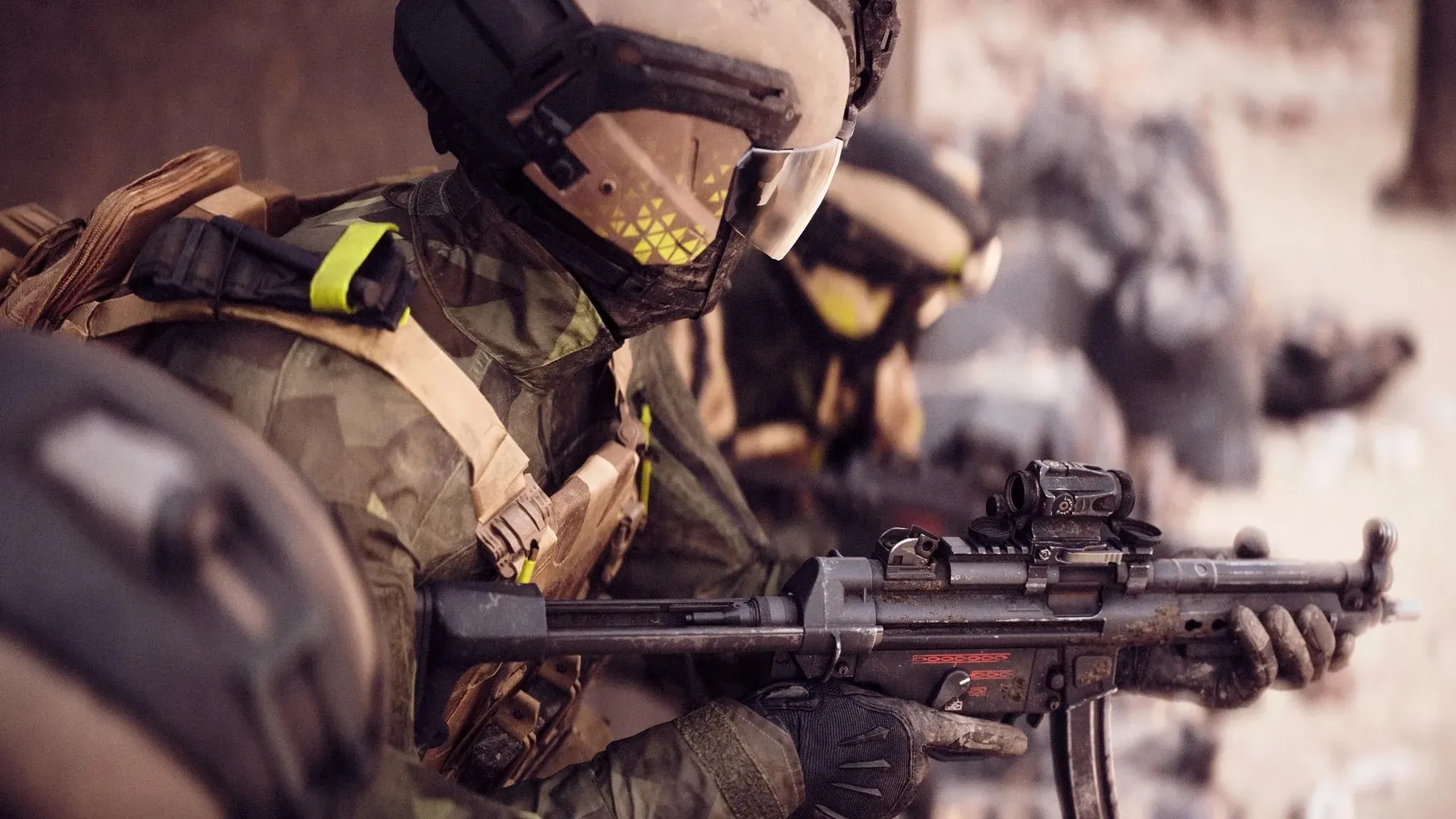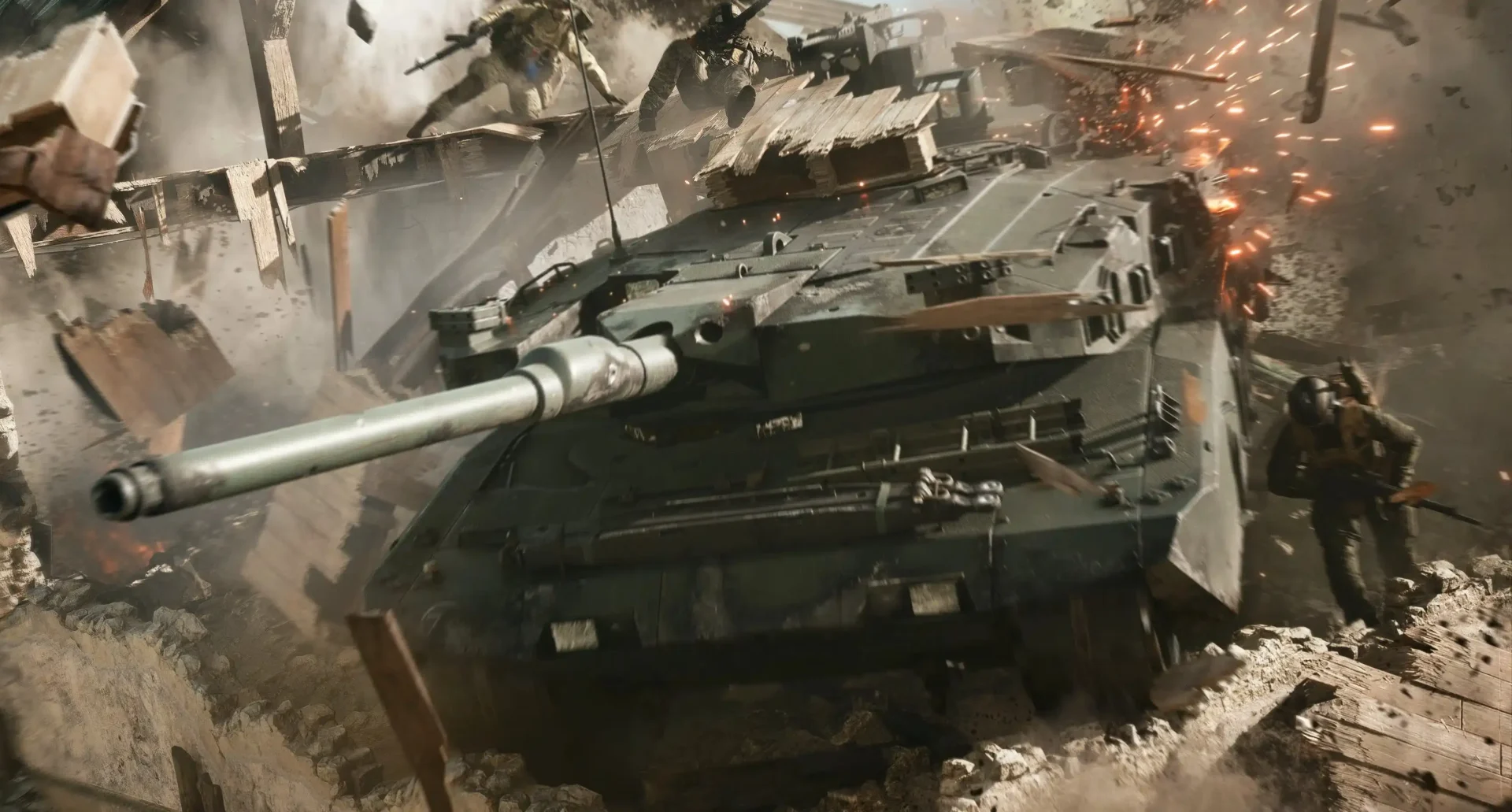DICE has officially released the Battlefield 6 Patch 1.0.1.0, marking the game’s first major post-launch update. It’s a big one — overhauling core movement mechanics, weapon balance, and vehicle handling while addressing dozens of stability issues. Here’s a detailed breakdown of what’s changing and how it affects your gameplay.
Movement Overhaul — Goodbye, Jump Spam
For months, players have complained about chaotic movement — constant jump-shooting, slide abuse, and unrealistic agility that broke immersion. Update 1.0.1.0 directly tackles those problems with a complete rework of how movement interacts with combat physics.
Jump height and mid-air control have been significantly reduced, preventing players from using “bunny-hop” tactics to avoid damage. Sliding momentum now decelerates faster, and there’s a noticeable delay when transitioning from a slide into another sprint or jump. Combined with the new accuracy penalties for firing mid-air, players can no longer rely on acrobatic spam to dominate firefights.
This new rhythm of combat encourages methodical pacing. Movement feels weightier — each stride and slide carries risk and intention. When you commit to a position, you must think about cover, team positioning, and sightlines rather than endless motion. It mirrors the tactical flow of Battlefield 3 and Battlefield 4, where situational awareness and map knowledge outweighed twitch reflexes.
As a result, matches now reward disciplined players who use natural movement and positioning instead of exploiting the physics engine. The battlefield feels like a warzone again — not a parkour arena.
Weapon Balance — Back to Skill-Based Gunplay

Weapon tuning in Update 1.0.1.0 represents the most comprehensive balance pass since launch. DICE’s primary goal was to make every gun feel distinct yet reliable — reducing random recoil spikes, unpredictable bloom, and inconsistent damage registration.
All primary weapon classes have been retuned for smoother recoil recovery and more predictable handling. Assault rifles regain their dominance in mid-range combat, while marksman rifles are once again viable at distance thanks to reduced bullet deviation. Submachine guns now deliver faster aim-down-sight times and improved first-shot accuracy, making them far more effective in close quarters.
The SDR-308SC and GGH-22, in particular, showcase this new philosophy. The SDR now maintains steady vertical recoil with predictable climb, ideal for tap firing or controlled bursts. Meanwhile, the GGH-22, once notorious for wild recoil swings, now handles like a balanced hybrid between an SMG and an assault rifle.
DICE has also fine-tuned ADS transition speeds, hit registration timing, and crosshair bloom, resulting in a smoother, more skill-dependent firefight. Spray-and-pray behavior is no longer rewarded — accuracy, recoil management, and burst discipline are once again the deciding factors in close duels and long-range engagements.
Developers stated that “handling should feel consistent across all weapon classes,” and the changes reflect that:
- Adjusted recoil patterns across ARs, LMGs, and SMGs
- Improved ADS (aim-down-sight) stability
- Reduced bloom for precision rifles
- Fixed inconsistent hit registration on burst-fire weapons
This patch also adjusts attachment values to align with real performance metrics. Scopes now better reflect weapon class design, and suppressors no longer obscure muzzle flash unrealistically. The end result is pure, grounded gunplay — the kind of firefight where every bullet, every correction, and every headshot feels earned.
Map & Mode Updates — More Flow, Less Frustration
One of Battlefield’s long-standing challenges has been flow — the rhythm of movement across objectives and the way spawn systems influence battle momentum. Update 1.0.1.0 delivers a major step forward in this area.
Rush and Breakthrough modes now feature reworked spawn logic that prevents unfair spawn trapping. Attackers are given improved flanking lanes, and defenders have better fallback options to avoid overwhelming pushes. Several capture points were moved or reshaped to break up bottlenecks that caused frustrating stalemates.
For example, Blackwell Fields and Canyon Verge — two maps frequently criticized for layout imbalance — have been refined to enhance tactical flexibility. The new spawn zones reduce instant-death scenarios and improve team coordination. Players now have clearer sightlines for both offense and defense, leading to engagements that feel fairer and more dynamic.
Lighting has also been adjusted across urban and nighttime environments, removing excessive glare and dark shadows that obscured enemies. Building interiors and alleyways now have more realistic contrast, helping players identify targets without artificial lighting bloom.
The result is a more natural visual balance that complements the new movement pacing — visibility that feels tactical rather than cosmetic. Combined with terrain clipping and traversal bug fixes, maps now encourage flanking, positioning, and teamwork instead of chaotic rushing.
Vehicles — Tuned for Precision and Power
Vehicle warfare — one of Battlefield’s most iconic elements — has been given a crucial tuning pass. Update 1.0.1.0 brings refined handling, control sensitivity, and balance between air and ground units, creating more cohesive combined-arms gameplay.
Helicopters now have smoother yaw sensitivity and reduced camera shake, making aerial maneuvers more precise without sacrificing difficulty. Pilots can maintain stable hover positions while firing, and passenger weapon sway has been reduced to ensure reliable accuracy during movement. Jets have received similar refinements, featuring more responsive throttle input, improved missile lock behavior, and better sound cues for countermeasures.
Tanks and armored vehicles benefit from a more responsive turret rotation system and improved collision detection, allowing them to react faster in close combat. The delay between input and turret movement is shorter, while armor response against explosive impact is now more predictable.
These refinements create a balanced vehicle ecosystem. Tanks feel powerful but not unkillable; aircraft are lethal yet demand skill and awareness; infantry has viable counters through improved anti-vehicle weapon responsiveness. Vehicle players will notice smoother aiming, steadier feedback, and more precise control overall — restoring Battlefield’s signature balance between mobility, firepower, and coordination.

Audio & Visual Enhancements
Immersion has always been central to Battlefield’s identity, and this update deepens it through subtle but important improvements in audio design and visual clarity.
Explosion effects now produce deeper, more realistic reverb, with positional sound giving players better awareness of distance and direction. Gunfire echoes more naturally across open fields, and environmental acoustics differ between indoor and outdoor settings, improving spatial accuracy. Voice comms and ping notifications have been rebalanced to stand out clearly, ensuring team coordination is never lost in background noise.
Visually, DICE has cleaned up excessive lighting artifacts, reduced particle clutter, and optimized post-processing filters. The result is a sharper image and smoother frame rate without losing the cinematic feel that defines Battlefield. On high-end systems, particle density now scales dynamically with performance load, keeping visuals consistent even during massive firefights.
Minor but noticeable details — such as cleaner muzzle flashes, improved tracer effects, and reworked explosion lighting — make the entire battlefield feel alive without overwhelming your vision. The game now communicates better: you can hear and see what’s happening more intuitively, enhancing both immersion and competitive clarity.
Technical Improvements & Network Code
Beyond gameplay, this update marks a leap forward in technical polish. DICE addressed numerous stability issues, optimizing both client and server performance. Crashes tied to DirectX 12 drivers and shader caching have been fixed, significantly reducing instability during large-scale matches.
Network synchronization has been upgraded through a refined server tick rate and improved packet timing, minimizing desyncs and misregistered hits. “Time-to-death” calculations now reflect true latency, making gunfights feel more consistent across regions and connection qualities. The days of dying behind cover due to lag are far less frequent.
Input latency during high-particle moments has also been reduced, ensuring commands register accurately even during intense explosions or weather effects. The UI now reacts faster, menus transition smoothly, and minimap tracking updates in real time with fewer stutters.
For players on mid-tier hardware, frame pacing improvements bring more consistent performance and fewer drops during heavy combat. On high-end PCs, optimization refinements make it easier to maintain 120+ FPS even on 128-player maps. The result is a smoother, more reliable technical foundation for both casual and competitive play.
What the Patch Really Means
Battlefield 6 Update 1.0.1.0 represents a course correction — not just a patch, but a philosophy shift. DICE has chosen to focus on fundamentals: fair movement, consistent weapon handling, intelligent map flow, and solid network performance. Every element in this update reinforces Battlefield’s true DNA — a tactical, large-scale shooter built around coordination and precision.
The pacing is slower, but it’s intentional. Combat feels deliberate. Positioning matters again. The balance between vehicles and infantry is restored, and the shooting mechanics finally reward accuracy and composure rather than randomness. For the first time since launch, Battlefield 6 feels like Battlefield — not a hybrid experiment or arcade chaos.
If DICE continues this trajectory with upcoming seasonal updates, the game could evolve into one of the most balanced and rewarding entries in the franchise’s history. This patch doesn’t just fix what was broken — it rebuilds player trust, one firefight at a time.
CarryLord Boosting & Battlefield 6 Services
For players rejoining after the update, CarryLord has already adapted its Battlefield 6 services to reflect the new gameplay balance. The platform’s updated boosting and training packages are built around post-patch mechanics to help players stay competitive and efficient.
- Weapon leveling and mastery unlocks — optimized for the new recoil patterns and ADS timing.
- Season 1 mission carries — tailored for Strikepoint, Sabotage, and other team-objective modes.
- Vehicle combat training — customized drills to master the updated tank and aircraft handling.
- Performance optimization — personalized guidance for graphics, latency, and frame rate stability.
CarryLord’s focus remains on helping players progress smoothly in the evolving meta while maintaining fair play standards. Their post-patch programs ensure you can adapt to the new mechanics quickly and maximize XP gain across weapons and vehicles.
Final Thoughts
Update 1.0.1.0 marks the turning point Battlefield 6 needed. It doesn’t reinvent the wheel — it restores it. By refining core gameplay and stabilizing the technical foundation, DICE has made the game faster, fairer, and more tactical than it’s been since launch.
Movement feels grounded, gunfights are skill-based, and team coordination once again drives victory. The update proves DICE isn’t giving up — it’s rebuilding. If the developer continues delivering patches of this depth and focus, Battlefield 6 could stand alongside Battlefield 3 and 4 as one of the series’ most complete experiences.
The battlefield is finally balanced — and it’s ready for war.











